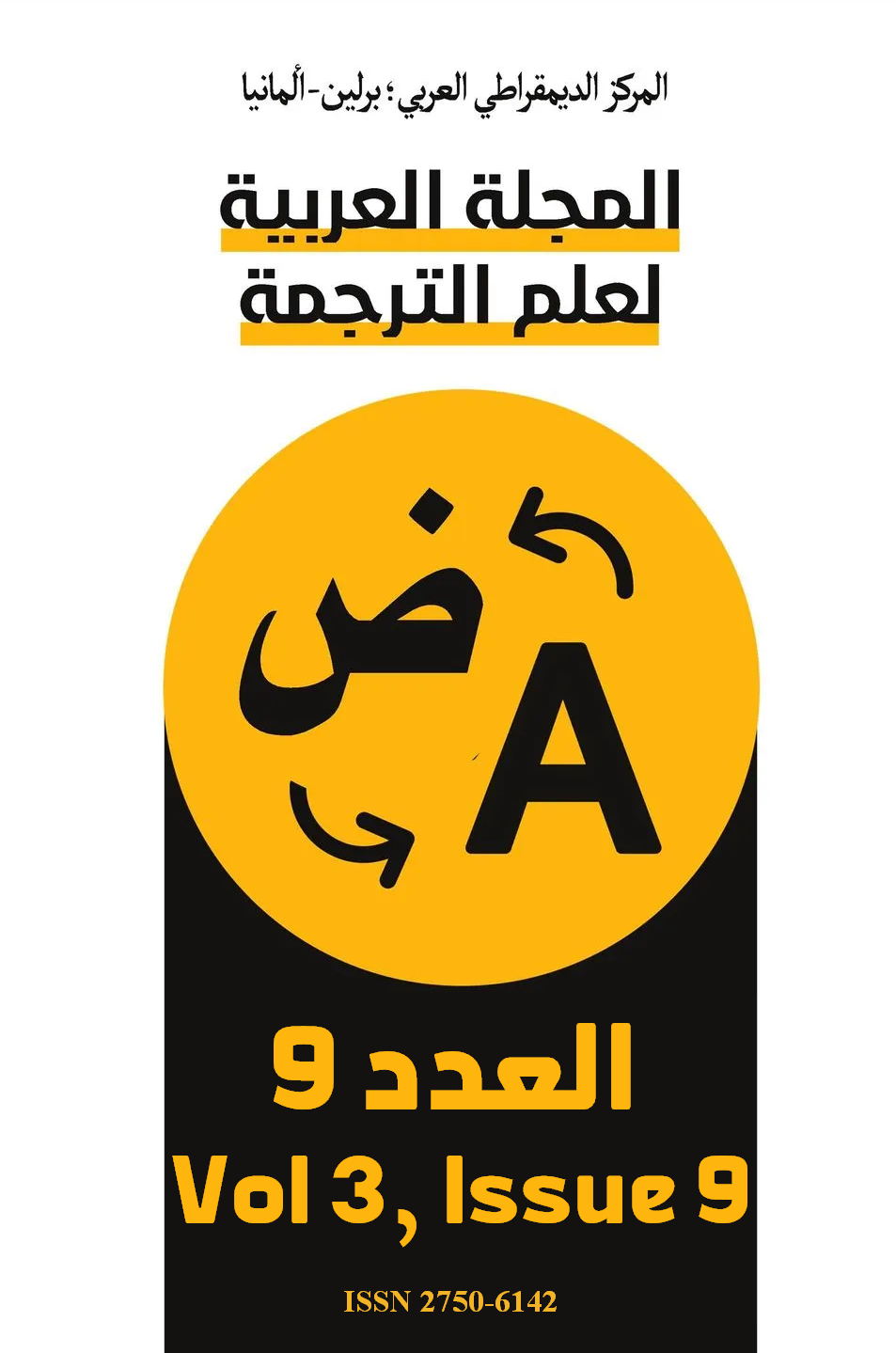A Definitional Approach to Apuleius's Novel The Golden Ass
DOI:
https://doi.org/10.63939/AJTS.w8edea17Keywords:
World Literature, Novel, Amazigh Literature, Ancient NarrativeAbstract
This article comes to shed light on an important area within the global narrative repertoire, which is the novel "The Golden Ass". The problem of this study was to define this novel, and to reveal the importance of this study in that the Amazigh culture throughout the ages has interacted positively with various human civilizations, in terms of influence and impact, and its history is full of important names of writers, philosophers and religious scholars, who excelled in different fields of knowledge, and expressed themselves in different languages.
Perhaps the most prominent of these names is the creative Amazigh Lucius Apuleius, author of the novel "The Golden Ass". This article (the problem) came to define this novel, and to shed light on the extent of the interest it has received in ancient and modern times. To achieve this, I employed a descriptive and analytical approach. The research plan included an introduction and sections that discussed the most prominent events of the novel, basic narrative lines, and elements of artistic construction in it and their impact on the subsequent narration, and a conclusion that included the results reached by the study.
Downloads
References
أبوبكر، أميمة. (1994). المسخ في حكايات ألف ليلة وليلة. مجلة فصول، 4(13)، 239-250
لوكيـوس، أبوليـوس. (2004). الحمار الذهبي (ترجمة دودو أبو العيد) (ط3.). بيروت: الدار العربية للعلوم ناشرون
أقوضاض، محمد. (2008). شعرية السرد الأمازيغي. الرباط: مطبعة المعارف الجديدة
بلوصيف، كمال. (2016). أسطورة التحول في الثقافات القديمة وأثرها في الثقافة الشعبية الجزائرية. مجلة العلوم الاجتماعية، 13(2)، 283-295 DOI: https://doi.org/10.53418/1726-000-023-019
بن ميس، عبد السلام. (2010). مظاهر الفكر العقلاني في الثقافة الأمازيغية القديمة: دراسة في تاريخ العلوم الصورية وتطبيقاتها. الرباط: منشورات IDGL
حنداين، محمد. (1991). مدخل لكتابة تاريخ الأدب الأمازيغي بالمغرب. منشورات الجمعية المغربي للبحث والتبادل الأمازيغي
حنفاوي، بعلي. (2018). الترجمة وجماليات التلقي: المبادلات الفكرية الثقافية. دار البازوري العلمية للنشر والتوزيع
حمداوي، جميل. (2009). المسرح الأمازيغي. الدار البيضاء: مطبعة النجاح الجديدة
خشيم، علي. (2000). لوكيـوس أبوليـوس: تحولات الجحش الذهبي (ترجمة علي فهمي خشيـم) (ط4.). طرابلس: المنشأة العامة
شفيق، محمد. (1989). لمحة عن ثلاثة وثلاثين قرنا من تاريخ الأمازيغيين. الرباط: دار الكلام
الصافي، مومن علي. (2010). المفهوم الحقيقي للحضارة المغربية. أكادير: مطابع سوس
الميلودي، سعيد. (2018). مداخل إلى الأدب الأمازيغي بالأطلس المتوسط. خنيفرة: منشورات جمعية إيزوران للثقافة
هالي، نور الدين. (2016). الاتجاه الأفلاطوني في رواية الحمار الذهبي لأبوليوس المداوروشي. مجلة دراسات، 8(4)، 151-164 DOI: https://doi.org/10.35644/1713-000-006-008
Annequin, J. (1996). Rêve, roman, initiation dans les Métamorphoses d'Apulée. Dialogues d'histoire ancienne, 22(1), 133-201 DOI: https://doi.org/10.3406/dha.1996.2267
Boidin, C. (2012). La «voie du retour»? Le modèle de l’Âne d’or dans le parcours du mythe de l’Algérie latine chez Louis Bertrand. Recherches & Travaux, (81), 17-40 DOI: https://doi.org/10.4000/recherchestravaux.539
Cèbe, J. P. (1989). Apulée. In G. Camps (Ed.). Antilopes – Arzuges. Aix-en-Provence: Edisud. https://journals.openedition.org/encyclopedieberbere/2565 DOI: https://doi.org/10.4000/encyclopedieberbere.2565
Fick-Michel, N. (1991). Art et mystique dans les Métamorphoses d'Apulée. Paris: Les Belles Lettres DOI: https://doi.org/10.3406/ista.1991.2511
Garbugino, G. (2009). La perception des passions dans le roman d’Apulée. In Passions, vertus et vices dans l'ancien roman: Actes du colloque de Tours, 19-21 octobre 2006 (pp. 209-221). Lyon: Maison de l'Orient et de la Méditerranée Jean Pouilloux. https://www.persee.fr/doc/mom_0151-7015_2009_act_42_1_2625
Harrison, S. J. (2013). Framing the Ass: Literary Texture in Apuleius’ Metamorphoses. Oxford: Oxford University Press
Heller, S. (1983). Apuleius, Platonic dualism, and eleven. The American Journal of Philology, 104(4), 321-339 DOI: https://doi.org/10.2307/294559
Hicter, M. (1944). L'autobiographie dans l'Ane d'Or d'Apulée. L'antiquité classique, 13(1), 95-111. https://doi.org/10.3406/antiq.1944.2721 DOI: https://doi.org/10.3406/antiq.1944.2721
Martin, R. (1993). D'Apulée à Umberto Eco ou les métamorphoses d'un âne. Bulletin de l'Association Guillaume Budé, 1(2), 165-182 DOI: https://doi.org/10.3406/bude.1993.1546
Montiglio, S. (2007). You Can't Go Home Again: Lucius' journey in Apuleius' Metamorphoses set against the background of the Odyssey. Materiali e discussioni per l'analisi dei testi classici, (58), 93-113
Notsu, H. (2015). L’Odyssée et les Métamorphoses d'Apulée. Shinshu Studies in Humanities, 2(2), 177-187
Casanova-Robin, H. (2003). De Métamorphoses en Métamorphoses. Un exemple d'intertextualité dans les Métamorphoses d'Apulée, l'évocation d'Actéon. Vita Latina, 169(1), 83-91 DOI: https://doi.org/10.3406/vita.2003.1150
Schlam, C. (1968). The Structure of the Metamorphoses of Apuleius. [Doctoral dissertation, Columbia University]
Thomas, J. (1986). Le dépassement du quotidien dans l'Énéide, les métamorphoses d'Apulée et le Satiricon: essai sur trois univers imaginaires. Paris: Les Belles Lettres
Heilmann, U. (2011). Tisserandes fatales (Apulée) et Fées de Cour (Perrault): Le sort difficile d’une Belle «née pour être couronnée». Études de lettres, (3-4), 205-220. https://journals.openedition.org/edl/202 DOI: https://doi.org/10.4000/edl.202
Downloads
Published
Issue
Section
License

This work is licensed under a Creative Commons Attribution-NonCommercial 4.0 International License.
As an open-access the journal follows the CC BY-NC 4.0 Attribution-NonCommercial 4.0 International which states that:
- you are free to:
- Share— copy and redistribute the material in any medium or format.
- Adapt— remix, transform, and build upon the material.
- Under the following terms:
- Attribution— You must give appropriate credit, provide a link to the license, and indicate if changes were made. You may do so in any reasonable manner, but not in any way that suggests the licensor endorses you or your use.
- NonCommercial — You may not use the material for commercial purposes.
- No additional restrictions — You may not apply legal terms or technological measures that legally restrict others from doing anything the license permits.












